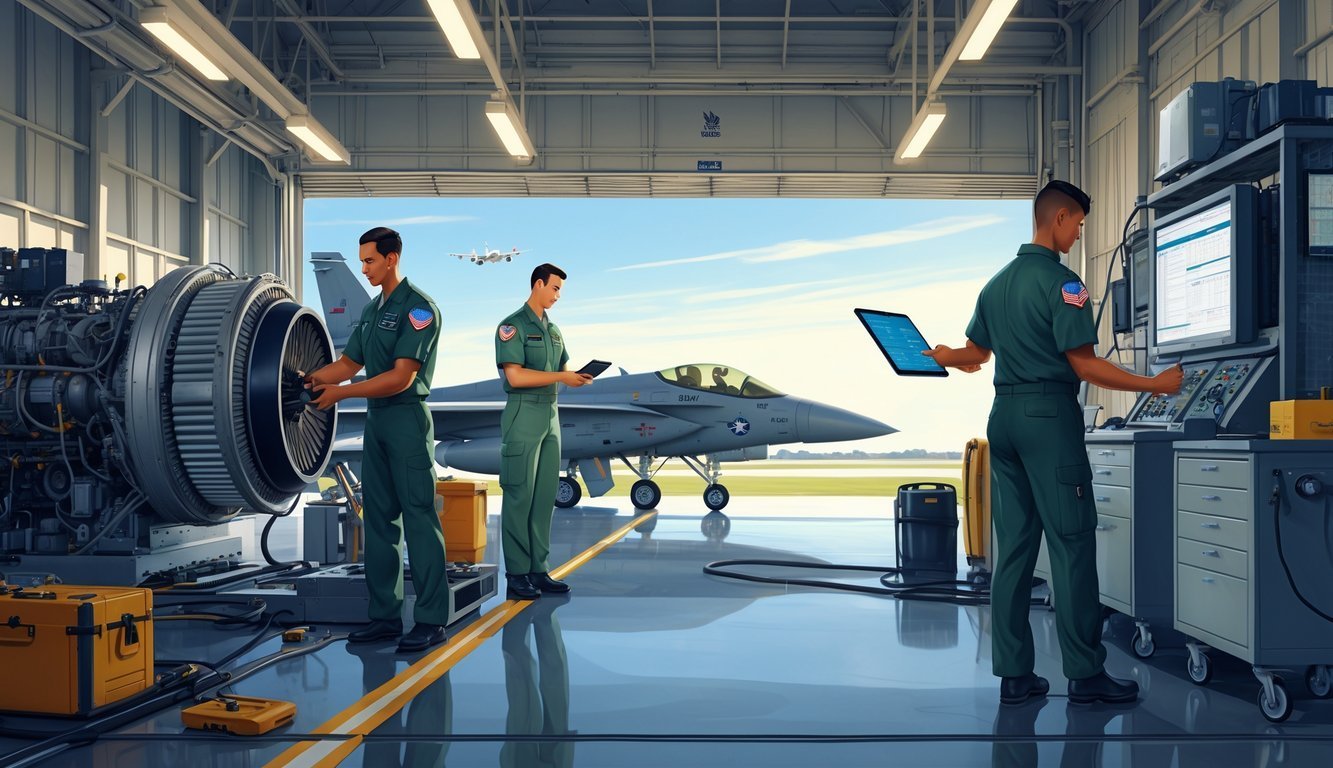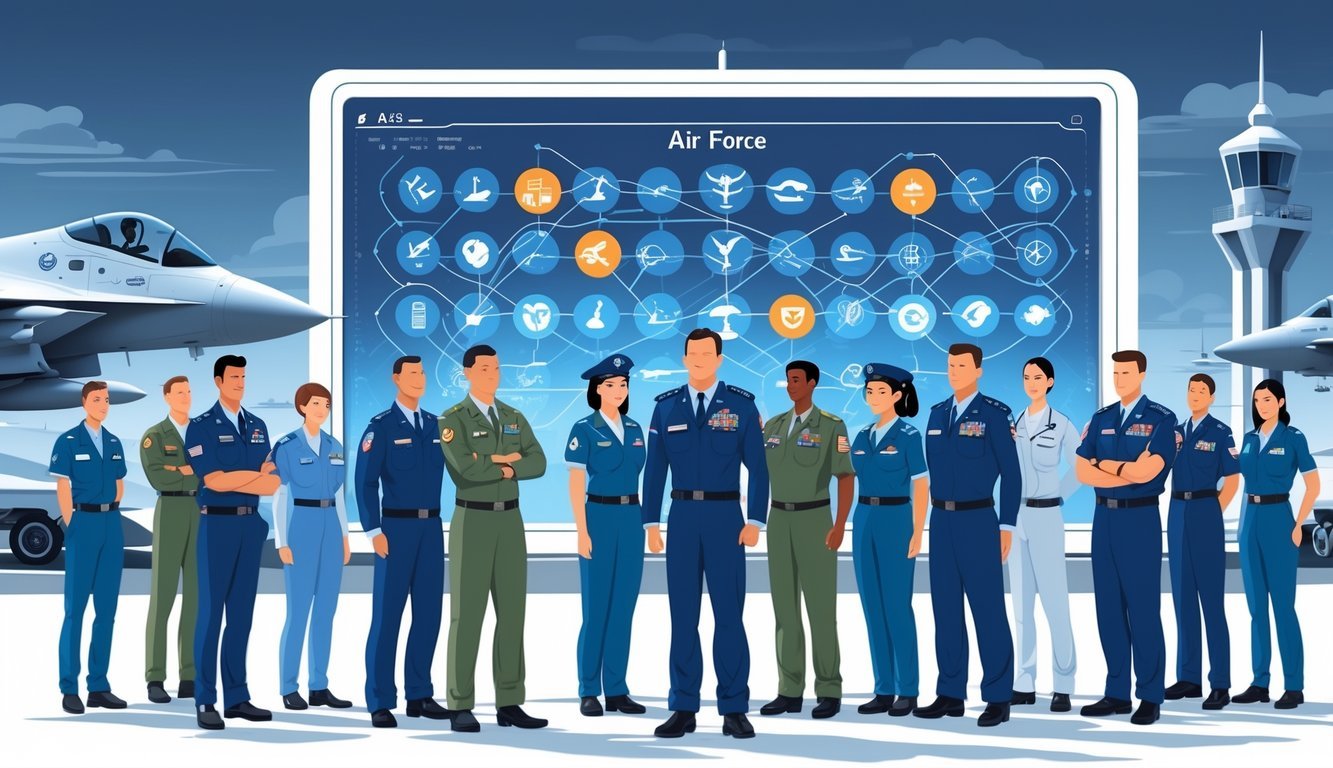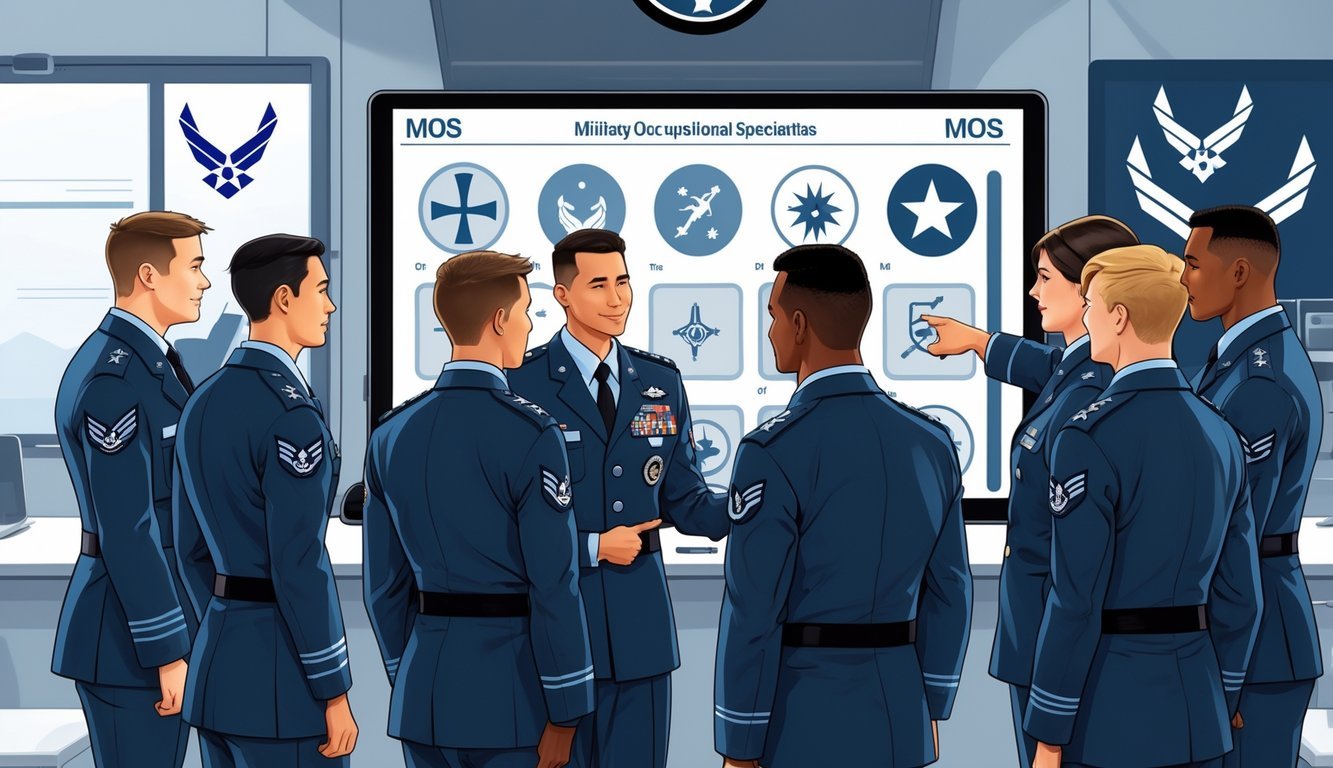PsychNewsDaily Publishers
100 Summit Drive
Burlington, MA, 01803
Telephone: (320) 349-2484
PsychNewsDaily Publishers
100 Summit Drive
Burlington, MA, 01803
Telephone: (320) 349-2484
An Air Force MOS, or Military Occupational Specialty, defines assigned jobs and training for personnel, shaping their career paths and skill development within the service.

Thinking about joining the U.S. Air Force? It’s smart to get a handle on the Air Force MOS (Military Occupational Specialty) before you make the leap.
An Air Force MOS is basically your assigned job, showing what kind of work you’ll do while serving. The roles are pretty diverse—flying, computers, maintenance, you name it.
Every MOS comes with its own training and requirements, so you’ll pick up the skills you need for your specific job. The Air Force organizes these jobs using codes called AFSCs (Air Force Specialty Codes).
When you know your MOS and AFSC, you can actually plan out your career path and see where you might grow.
There are tons of career options in the Air Force, and your MOS shapes the skills you’ll build and the missions you’ll tackle.
Want to be a pilot, a technician, or maybe dive into cyber warfare? There’s a spot for you somewhere.

The Air Force organizes jobs and careers using a unique system. That system shapes your training, daily work, and long-term progress.
If you understand how your role gets defined, you’ll know what to expect and how to plan your next steps.
MOS stands for Military Occupational Specialty—a term you’ll hear mostly with the Army and Marine Corps. The Air Force has something similar but calls it the Air Force Specialty Code (AFSC).
Some people say “Air Force MOS,” but officially, the Air Force uses AFSCs. These codes pinpoint exactly what you do, whether that’s security, cyber, or something else.
Think of MOS as a broad military job. AFSC is the Air Force’s way of getting specific about your skills and duties.
AFSCs use letters and numbers to show your career area and skill level. The first character tells you the career group—operations, support, medical, and so on.
The rest of the code gets more detailed, describing your job function and expertise. As you move up, your AFSC changes to reflect your new responsibilities.
You might start as an apprentice and then become a journeyman, craftsman, or even a superintendent. Each step opens up new training and leadership opportunities.
Your AFSC depends on whether you’re enlisted or an officer. Enlisted AFSCs focus on technical jobs and skill levels—think tactical air control or airfield management.
Officers get commissioned AFSCs that lean more into leadership, planning, or specialized roles like space systems operations or personnel recovery.
Your rank changes how you use your AFSC. Enlisted folks handle more hands-on work, while officers take on planning and command. Both have clear paths to move up.
The Air Force groups AFSCs into broad career fields. Some examples:
Each field has roles that can fit your interests and strengths. You’ll get training that prepares you for your job and helps the Air Force complete its missions.

Air Force jobs really do cover a lot—flying, fixing, intelligence, cyber. Training usually starts with technical school and then on-the-job experience.
Some jobs require special licenses or advanced skills before you can move up.
In aviation and aircraft maintenance, you’ll work on all kinds of military planes—fighters, bombers, refuelers, you name it.
Training kicks off with Technical School or AIT, where you learn the basics of things like fuel systems and avionics.
You can specialize in tactical aircraft maintenance for newer fighters or remotely piloted aircraft maintenance. Some folks handle structural maintenance, working with metals and stealth coatings.
Others focus on aerospace propulsion or hydraulic systems. To move up, you might need certifications like an ASI (Additional Skill Identifier) or licenses for certain equipment.
Getting promoted to E8 or higher usually means you’ve mastered leadership and technical know-how.
If you end up in intelligence or cyber, you’ll support missions by gathering and analyzing data. You might work as a Cryptologic Language Analyst or a Signals Intelligence Analyst, decoding and protecting vital info.
Training covers ISRs (Intelligence, Surveillance, Reconnaissance), cyber defense, and spectrum operations.
You’ll get a mix of classroom lessons and hands-on work in electronic warfare or cyber operations.
To move up, you need to understand mission systems and keep up with changing tech. You might also take courses in networking, cryptography, and get security clearances.
Some jobs are just different—like Combat Control, Pararescue, or Military Working Dog handlers. These roles need physical and tactical training on top of tech courses.
Other special duties include Aircrew Flight Equipment (managing survival gear), Air Traffic Control, or Airfield Management—all crucial for safe operations.
There are also support roles like investigations or chaplain assistants to help with order and morale.
Training varies a lot, but you always get a mix of formal classes and field experience to prep you for the job.

There are all kinds of jobs in the Air Force, each with its own requirements. What you qualify for depends on your skills, test scores, and the job you want.
Enlisted folks can work in aircraft maintenance, security, medical support, logistics, and cyber operations. Each job keeps the Air Force running.
Check out official Air Force sites or military career resources. They break down duties, requirements, and training for each job.
Officers usually focus on leadership, pilot gigs, engineering, intelligence, and medical fields. Their jobs lean more toward management and specialized skills.
Your ASVAB score helps match you to jobs that fit your strengths. Higher scores open up technical and specialized roles, while some jobs need lower scores.
AFSC stands for Air Force Specialty Code. Each code ties directly to a job and shows your career field and level.
Women can join nearly every Air Force career, from technical jobs to combat roles. The Air Force offers opportunities to anyone who qualifies.
Honestly, there aren’t special jobs just for women—the doors are open for everyone. If you’ve got the skills and drive, you can go after almost any position.